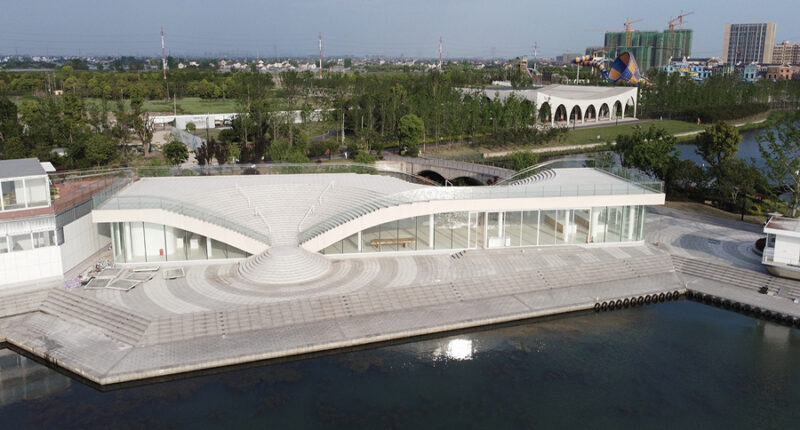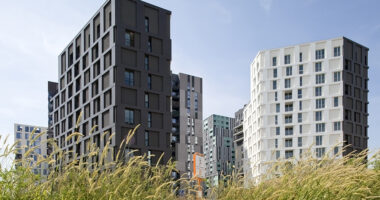The Cruise Terminal in Jiaxing, China, designed by Hexia Architects, stands as a testament to the fusion of architectural innovation and natural beauty. Situated along the scenic Ginkgo Swan Lake in the Xiushui New District, the terminal embodies the spirit of harmonious coexistence between ecology and technology, tradition and modernity.

Context and Design Philosophy
Ginkgo Swan Lake, renowned for its natural and cultural significance, serves as the backdrop for the Cruise Terminal project. Drawing inspiration from the lake’s ecological richness and traditional heritage, the terminal aims to create an immersive experience for visitors. By integrating elements such as ginkgo forests, art museums, and ecological bird islands, the project seeks to redefine urban living as a symbiotic relationship between nature, technology, and culture.
Innovative Design Concept
The design philosophy of the Cruise Terminal revolves around reimagining the waiting experience as an enjoyable activity. Embracing the notion that queuing can be tedious, the architects envisioned a space where visitors can relish the anticipation of their journey. The terminal is conceived as a dynamic environment where waiting becomes an engaging and pleasurable endeavor.

Spatial Innovation
Central to the design is the reinterpretation of the staircase as a multifunctional element. Traditionally seen as a transitional space, the staircase in the Cruise Terminal blurs the distinction between ascent and descent. By seamlessly integrating seating and walking surfaces, the terminal transforms into a fluid space where movement and relaxation converge. The transparent curtain wall ensures panoramic views of the lake, fostering a connection between the interior and the surrounding landscape.
Dynamic Environment and Flexibility
The terminal’s layout is characterized by flexibility and adaptability, with auxiliary functions discreetly housed in a white box structure. This design choice not only optimizes space but also enhances the visual appeal by creating a sense of openness. The expansive interior accommodates various activities such as ticket sales, exhibitions, and dining options, offering visitors a versatile environment to explore and engage with.

In essence, the Cruise Terminal in Jiaxing exemplifies a harmonious blend of functionality and pleasure, redefining the conventional notions of waiting and transit. As a testament to architectural innovation and ecological consciousness, it stands as a beacon of sustainable urban development in the heart of China’s scenic landscape.























